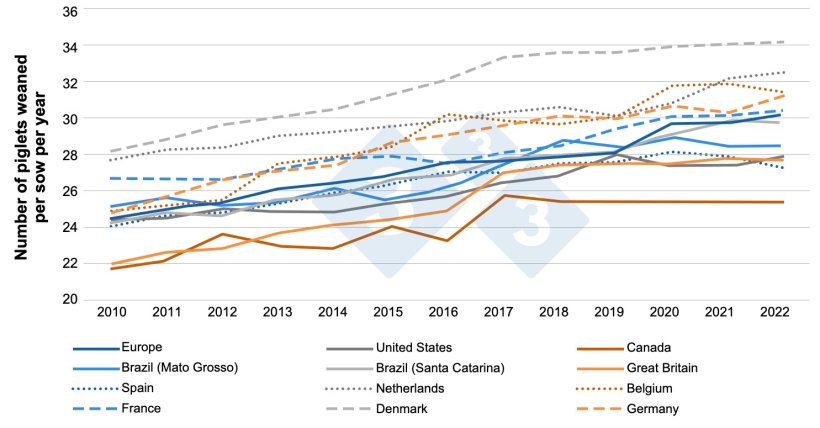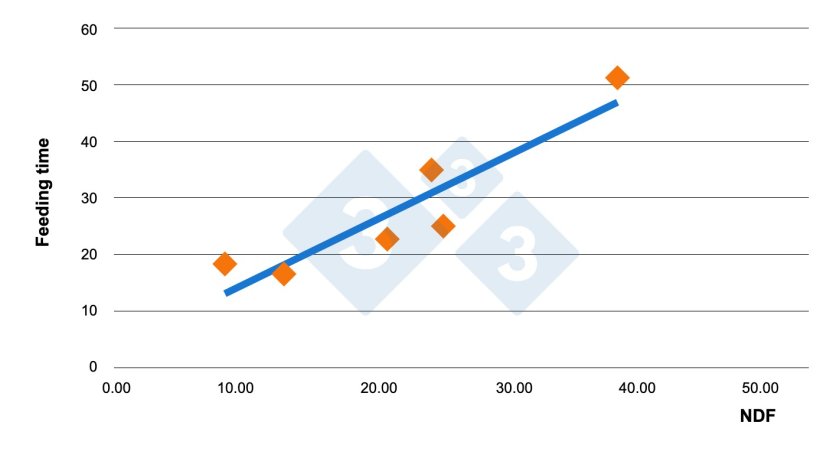The arrival of hyperprolific lines has transformed global pig production over the last decade. Genetic improvement, together with more technical management programs, has led to an increasing number of piglets weaned per litter (Figure 1). However, this increase in productivity has not been without consequences. Sows face greater physiological demands, which translates into a higher metabolic load, increased nutritional requirements, and, in many cases, increased mortality on farms. This phenomenon is of particular concern in Spain, where recent data show mortality rates higher than 15% (SIP Consultors, 2023), well above those recorded in other European countries such as France, at just 5.2% in 2022 (IFIP).


To understand this difference, it is essential to analyze management factors as well as nutritional and health factors.
Despite the notable differences in production methods between the two countries, reproducible differences that could explain this difference in mortality in sow production between Spanish and French farms have been sought, and three main factors have been identified that influence sow mortality: daily feed intake, fiber content in the diet, and health monitoring protocols.
1. Daily feed intake
In terms of nutrition, actual feed intake is a critical parameter that determines the sow's ability to meet her maintenance, gestation, and lactation requirements.
In Spain, feed intake/sow/year stands at 1,180 kg (SIP, 2024), while in France this figure is significantly higher, at 1,244 kg (IFIP 2023). The main difference is observed during the middle stage of gestation (days 31-85).
The use of certain feeding systems in group pens leads to high competition among animals, resulting in unequal intake. Subordinate sows, with less access to food, suffer chronic nutritional deficits that lead to higher stress levels (Amdi et al., 2013), shorter productive longevity, and a higher risk of early culling.
2. Fiber in the diet
The second key factor is the level and quality of fiber in the diet.
In France, one of the systems used is the "fiber index," which integrates different fractions (insoluble fiber, ADF, NDF) using an equation adjusted through meta-analysis.
Fiber index = Y soluble value + Z ADF + A NDF
This index allows the analytical values of fiber to be correlated with the physiological effects observed in sows. Its practical application has been shown to improve satiety, stabilize feed intake, and reduce stereotypical behaviors related to hunger.
An example of this meta-analysis can be seen in this graph:

Figure 2. Relationship between dietary FND content and feeding time in gestating sows.

This equation is obtained through meta-analysis of data on the relationship between fiber content in feed and its effects on pig farms.
In Spain, however, this approach is not widely used, and diets tend to have a lower or less balanced fiber content without taking into account the relationship between these parameters.
3. Health monitoring
The third distinguishing point is the implementation of farm health monitoring programs.
In France, it is common to include routine assessments that are still rare in Spain, such as urine analysis and blood hemoglobin testing.
- Urine analysis:
Urinary tract infections (UTIs) are an underdiagnosed condition on our farms, but they have a high prevalence, ranging from 41% (De Moura et al., 2018) to 46% (Cernat et al., 2021; Tolstrup et al., 2023). Subclinical cystitis is the most common form, and sampling is essential for detection. To do this, a sample of at least 30 ml is taken first thing in the morning, with the aim of ensuring that the sow has not urinated for at least four hours to avoid dilutions that could lead to errors. The greatest number of samples possible are collected and tested with test strips within minutes of collection to measure the following parameters: pH, protein, nitrites, and blood.
All these parameters will help us assess the urinary health of our farm and take action, since there are different additives that directly affect this.
- Blood hemoglobin:
Blood hemoglobin in sows is a key indicator in assessing their health status, and it is another point of difference between routine sampling in both countries. To measure it, the number of animals to be sampled is determined based on the size of the farm, and portable hemoglobin analyzers are used directly in the field. Low hemoglobin values are associated with longer farrowing and more stillborn piglets (Bolliger et al., 2025).

Figure 3. Relationship between hemoglobin levels at farrowing and stillbirths. (Bhattarai & Framstad, 2018).
This relationship between stillbirths and hemoglobin levels, published by Sheeva Bhattarai, reinforces these concepts.
As with urinary health, hemoglobin levels can be influenced by the sow's nutrition, so it is essential to understand the sow's condition to make the necessary adjustments.
Conclusion
The increase in sow mortality should be understood as a multifactorial phenomenon. There is no single cause, but rather a combination of nutritional, management, and health factors that interact with each other. Therefore, strategies to reduce mortality must be equally multifactorial. The integration of nutritional adjustments (especially in fiber) with systematic health monitoring programs offers tangible results. Practical experience on farms applying this approach has achieved a reduction in mortality of up to 37% in just one year.


